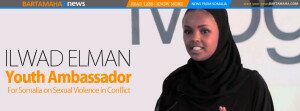I’m not really a Somali, yet I’m not Kenyan either. I think I am more of a Dadaabian
In the shade of a thorny acacia tree inside the Dadaab Refugee Camp, Shamsa Abdullahi Osman rests on a bench breastfeeding her youngest child, Aden, who was born only six months ago.
On the dry red soil next to the bench, her two older daughters, Khadija, nine, and Farhiyo, seven, sit playing with a pair of glass marbles.
The rest of her six children are visiting relatives, who live in other areas of the sprawling refugee camp.
Shamsa was born in this camp in 1991. Now she has married, given birth to six children, and turned 23 without ever stepping outside it.
“I’m a Somali, but this is the place I call home,” she says. “This is where I grew up and this is where my children will grow up.”
Shamsa is one of more than 100,000 second-generation refugees living inside the camp, while her children belong to the rapidly growing number of third-generation refugees, who last numbered 15,000, according to the UN Refugee Agency (UNHCR). Off the record, the figure could be higher, as babies are born every day to parents who were also born inside the camp.
The story of these refugees does not start in the camp. Shamsa’s, for instance, begins with the outbreak of the Somali civil war more than 23 years ago. In early 1991, the war that had started in Mogadishu following the ouster of president Siad Barre extended to Bu’aale, where Shamsa’s parents, Abdullahi and Sharifo, earned a living as farmers.
Within a few days, life became increasingly dangerous as violent militias set houses on fire, looted farms, and raped women near the outskirts of the town. At the time, Sharifo was five months pregnant with Shamsa.
Fearing for their safety, Abdullahi decided it was time for the family to join the large stream of Somali civilians crossing the border into Kenya to find security. Upon reaching safe land, the refugees were settled in the newly constructed Dadaab Refugee Camp. With hordes of exhausted refugees arriving daily, the camp’s population quickly rose to more than 90,000.
A few months into their new life, Sharifo gave birth to Shamsa, the couple’s first child born inside the refugee camp. Shamsa was born on a couple of blankets inside the mud hut her parents still live in. Sharifo and Abdullahi are blessed with five children and six grandchildren — all born in the camp.
“I thought we would be refugees only for a couple of months and then return to our farm in Somalia, but now this has been our home for 23 years. With the situation in Somalia it doesn’t look like we are returning any time soon,” says 53-year-old Abdullahi.
According to UNHCR’s most recent census, there are now officially 356,101 refugees living in Dadaab refugee camp, 95 per cent of whom are from Somalia.
Since it was established, the camp has become more than a refugee centre; it now has the feel of a Somali city on Kenyan soil, or perhaps more accurately, a collection of five overcrowded, medium-sized Somali towns spread out over a sun-baked, arid area around the original Kenyan Dadaab town.
Five thousand businesses are estimated to operate in the complex, generating a combined turnover of roughly Sh2.2 billion.
Between the cramped settlements and shabby makeshift houses, the camp has lively markets and busy mosques. Along the unpaved roads stand a large range of restaurants serving camel meat and other popular Somali dishes, and outside these elders sit around small tables chewing miraa.
Even after 23 years, this still does not feel like home to Abdullahi.
QUESTION MY NATIONALITY
“Every year I’m getting more used to life here in Dadaab and sometimes I start to question my nationality. I belong in a peaceful Somalia — that will always be my home country, even after these many years,” says Abdullahi.
Since he came to Dadaab, Abdullahi has never been back to Somalia, unlike some of his neighbours, who sneak out to pay visits to their home country during rare intervals of stability. With the deteriorating security situation in Somalia, however, Abdullahi does not even consider taking his family back “home”.
“The main priority for me and my family will always be security,” he says. “Living in Somalia, then, only becomes a secondary need.”
As his children grew up inside the camp, Abduhalli pledged to teach them about their home country, which they have never seen.
“I told them about our farm; how the watermelons, the mangoes, and the maize we used to grow are bigger and tastier than those here. I told them about the ports and the rivers where we used to catch plenty of fish,” he says.
For his daughter Shamsa, who has never experienced life outside a refugee camp, the distance to Somalia seems farther than the actual 80 kilometres.
Dadaab is where she took her first steps, met her husband, and is raising her children. The notion that she belongs somewhere else, in a country she has only been told about, is hard for her to understand.
“I never think about returning to Somalia. I never even think about the country. I know almost nothing about Somalia and I know no one there,” she says.
As a refugee, she is only allowed to move within the invisible boundaries that surround the Dadaab Refugee Camp. If the police or other authorities catch her more than 20 kilometres away from it, she will be arrested and forced to return.
However, Shamsa has never been tempted to leave because, as she explains, she has “nowhere else to go”.
Shamsa says she sometimes questions her own national identity. Having never been to Somalia, she does not feel Somali. On the other hand, she does not feel Kenyan as she has only lived among the Somalis in Dadaab and has not yet learnt to speak Kiswahili.
“I’m not really a Somali, yet I’m not Kenyan either. I think I am more of a Dadaabian,” she says.
Shamsa’s husband Ali, 40, arrived as a refugee in 2002, but understands that Shamsa feels at home in the camp. The couple rarely talks about visiting Somalia or the possibility of going back.
On several occasions, Kenyan politicians and commentators have campaigned for the closure of the Dadaab Refugee Camp due to high operating costs and fear that it has become a hotbed of extremism. So far the refugees have been allowed to stay as the UN argues that forcibly returning them to Somalia would expose them to instant danger.
If Somalia becomes peaceful in the coming years, it is likely that the Kenyan government will call on the UN agencies to repatriate the Somali refugees to safe areas in their homeland. But even if Somalia manages to reverse the trend of violence and instability, Shamsa cannot imagine abandoning the camp to resettle in her motherland.
“Even if peace returns to Somalia, I will stay in Dadaab Refugee Camp. This is home for me and my family. Everyone we know lives here, not in Somalia. My children are also getting a very good education, which they would never get in Somalia,” she says.
EDUCATION IS THE MAIN REASON
For many refugees living in Dadaab, including Shamsa, education is one of the main reasons for staying in the camp. Across the large settlement are 39 primary and seven secondary schools, where pupils of all ages learn for free. Despite having more than 2,000 students each, these schools are a much better alternative to their counterparts in Somalia, where education has been neglected against the backdrop of civil war.
Unfortunately for the refugees, free education and other services provided by Unicef and other UN agencies have been criticised by Kenyan politicians, who want to temper the influx of incoming refugees and return others to stable parts of Somalia. Many believe that education is an incentive for refugees to extend their stay in the camp.
According to Fiaz Shah, Unicef’s officer-in-charge and education specialist in Dadaab, the benefits of educating the refugees are far greater than the setbacks. “Education gives the refugees a hope in life. One day many of these children will leave the camp and by educating them we want to ensure that they get a chance to succeed in life,” says Shah.
Another benefit of offering free education is that it promotes camp security by keeping youth from participating in illegal businesses. “The schools keep the youth in the camp. They appreciate the value of an education. If they were not in school, many of them would be easy targets for extremist groups, while others might end up in the slums of Nairobi, where they could join gangs of criminals.”
Last year Kenyatta University opened a satellite campus in the Kenyan town of Dadaab and reserved two thirds of its vacancies for refugees. This makes the refugee camp the first in the world to have access to post-secondary education.
At Unicef, there is hope that the camp’s young, well-educated generation of Somali refugees will eventually return home to help rebuild the shattered country. And so every morning Shamsa’s two older daughters, Khadija and Farhiyo, go to primary school after attending the duksis, the Somali version of madrassa, where they study the Koran. Shamsa dropped out of primary school after Standard One because her parents could not afford books or school uniform. Through education, she hopes her children will have opportunities she never did.
“A good education can enable our children to break this negative cycle. They can get good jobs, earn good money and start successful families themselves,” Shamsa says, remaining hopeful that one day her children will attend the university and be first in line for the most desirable jobs.
“My dream is that they will work with Unicef, Care, Médecins Sans Frontières, or UNCHR,” she says, her choice of dream jobs mirroring the only exposure she has had since all these organisations are, not surprisingly, aid agencies. Yet even in these dreams, Shamsa does not dare fantasise about a life outside the camp. “I guess I will stay here until I die. And my children could stay here for a very long time too,” she says.
If the situation in Somalia does not improve over the next decade, her two older daughters, Khadija and Farhiyo, will likely marry in Dadaab and start raising families of their own. These children will belong to yet another generation of Somalis growing up in the refugee camp. Or, as Shamsa calls herself, Dadaabian.
Comments
comments
 Calendar
Calendar


















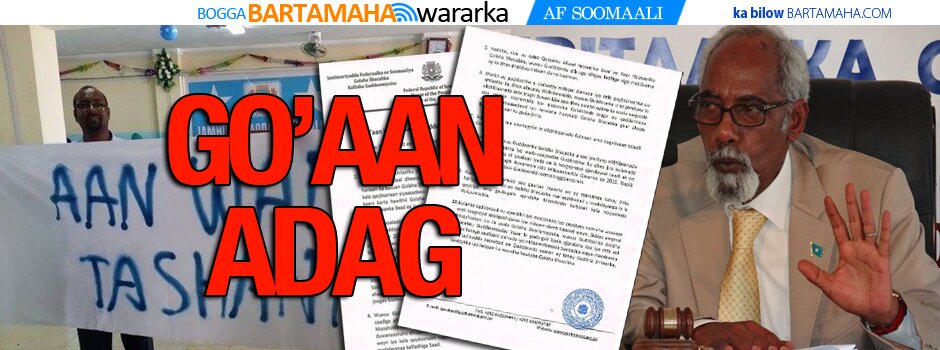

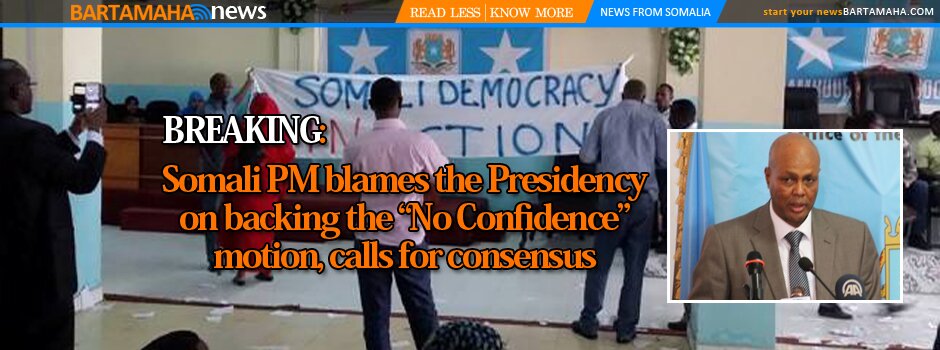
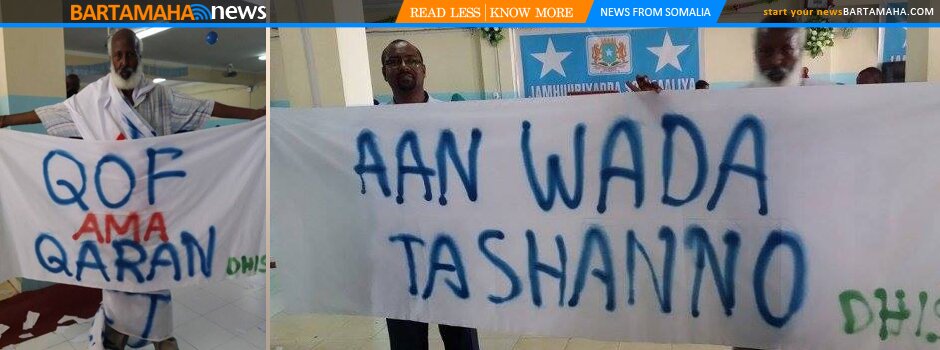



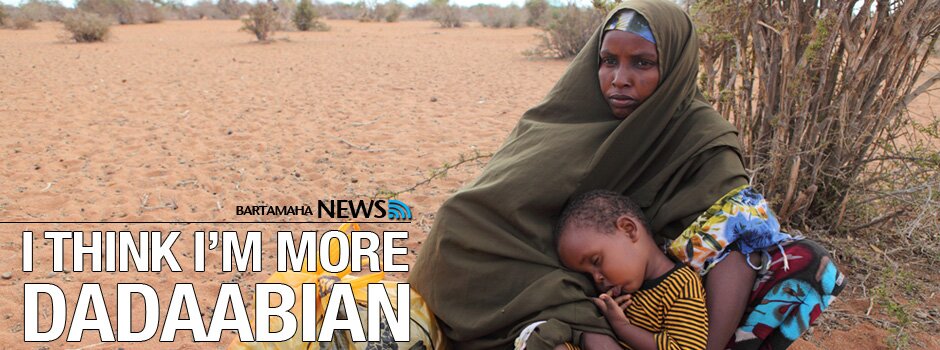

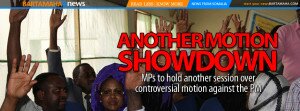
![Residents of Bulo Burde in Hiran region welcome African Union Mission in Somalia troops on March 14, 2014, a day after they forced al-Shabaab out of the town. [AU UN IST PHOTO / Ilyas A. Abukar]](/wp-content/uploads/2014/11/Bartamaha-300x200.jpg)
![A Benadir Electricity Company (BECO) technician works on the generators at one of the company's power stations in Mogadishu. [Warsame Afrah/Sabahi]](/wp-content/uploads/2014/11/beco-300x200.jpg)




